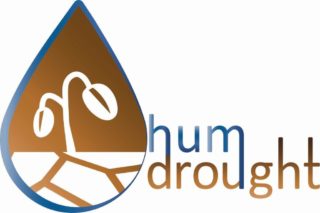Human and Climate Impacts on Drought Dynamics and Vulnerability
HUMDROUGHT
Summary
In the Anthropocene when the Earth system is profoundly affected by human activities, drought is no longer a natural hazard. Drought management is inefficient because feedback between drought and people is not fully understood. We need to rethink the concept of drought to include the human role in mitigating and enhancing it.
At the same time, the projected increase in temperature is said to influence hydrological regimes by reducing snow storage, causing larger winter precipitation in the form of rainfall (instead of snow) and a rise in potential evapotranspiration and introducing changes in the seasonality of flow. These changes impact the frequency and magnitude of droughts causing increasing losses in both Poland and China. The novel, holistic approach introduced in HUMDROUGHT will deepen our understanding of the direct and indirect causes of drought and the processes governing the transformation from meteorological to hydrological drought for the purposes of sustainable water management and drought prevention in Poland and China. The Huai River basin in China and the River Vistula basin in Poland will be used as case study catchments.
The objective will be accomplished by addressing the following topics: (i) assessment of drought characteristics and their links with catchment properties in the study areas (ii) investigation of human impacts on the spatiotemporal characteristics of hydrological droughts; (iii) assessment of drought vulnerability and its change in the 21st century; and (iv) development of strategies of water resource management for enhancing drought resilience in the context of climate change.
New modelling tools incorporating multisource data (including ground- and satellite-based observations and data products obtained from reprocessing) will be developed to investigate water transformation processes among evapotranspiration, soil moisture, groundwater, streamflow and societal water consumption under different catchment physiographic conditions. Despite broad research on the causes and dynamics of drought processes, there is a lack of a fully holistic approach. This novel study will allow the interaction mechanism among drought characteristics – drought impacts – water resources management measures to be explained and strategies of water resource management to reduce the drought vulnerability to be proposed, so as to support decision-making for drought management in the context of climate change. The development of an adaptation strategy to projected human and climate impacts on low flow events taking into account the uncertainty of the projections will be an important project deliverable. The comparison of the propagation of drought processes in different climatic and geographical conditions in China and Poland will widen our knowledge of the dominant processes governing the dynamics of drought and its sensitivity to physio-climatic characteristics. The cooperation between Chinese and Polish teams will open new possibilities in both countries regarding studies of climate impact on droughts, related both to statistical analysis and to a system-science approach. The experience of both teams is complementary in respect of the characteristics of their study area. The Polish team has proven experience in the analysis of hydrological extremes in semi-natural catchments. The Chinese team has good experience in hydrological remote sensing skills and studying human impacts on droughts. Thus a combination of knowledge of both aspects of the drought process will be the main added value of the cooperation. The project will result in increased understanding and a number of innovative methods for better drought characterization and drought management which can be transferred to other areas in China, Poland, and potentially worldwide.
Description of the project plan
- WP1 Drought characteristics and links with catchment properties
- WP2 Assessment of the impacts of human activities on the formation and development of hydrological drought
- WP3 Hydrological drought vulnerability analysis
- WP4 Strategies of water resource management for enhancing drought resilience in the context of climate change
Contact
Institute of Geophysics Polish Academy of Sciences
ul. Księcia Janusza 64, 01-452 Warszawa
tel.: +48 22 6915-950, fax: +48 22 8776-722
e-mail: office@igf.edu.pl
